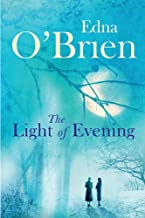Tastes change. Fashions change. Presumptions, through whose refracting prisms each new age interprets its aesthetics, also change, but usually unpredictably because we absorb the restrictions without being conscious of their control. It’s probably called culture, and perhaps we are all imprisoned by its inherently commercial pressure. And we only rarely perceive change in our ability to respond to stimuli, often surprisingly perceived when we remove our experience into a different culture, a different aesthetic and possibly another time. This is precisely why exploration of criticism from the past can be so rewarding and, in a way that the writing would never have achieved in its contemporary setting, challenging. It was this kind of experience that flowed from every page of Paul Rosenfeld’s Musical Portraits.
These “Interpretations of Twenty Modern Composers” were published in 1920, having previously appeared as occasional pieces elsewhere. A hundred years on, of course, the first challenge is the meaning of the word “modern” in its title, especially when the presented list of composers starts with Wagner and finishes with Bloch. Personally, I have nothing against classifying Bloch as “modern” in the 1920s, but the inclusion of Wagner is surely pushing the definition, since he had already been dead for over 35 years.
Reading Rosenfeld’s text, however, one quickly understands Wagner‘s inclusion. For the writer, Wagner’s work created the cusp between the feudal and modern worlds. His stature and influence was still so great, his achievements still considered so monumental, that this work of critical appraisal just had to begin with his name. Rosenfeld sees his music dramas as manifestations of a new industrial age, reflecting the unprecedented might of the new coal-powered civilization.
Strauss, Richard, of course, comes next. Pure genius, he is judged, at least on the evidence of his early symphonic poems, which approached a realization of the Nietzschean dream via colours that suggested impressionist painting. By the time we reach Salome, however, he had become “a bad composer”, “once so electric, so vital, so brilliant a figure” had transformed into someone “dreary and outward and stupid”. Rosenkavalier is judged “singularly hollow and flat and dun, joyless and soggy”. One must recall that this was 1920 and that Richard Strauss still had over 20 years of creative life remaining.
Mussorgsky’s “marvelous originality” was an expression of the true nature of Russian folklore, culture and peasant life. Liszt, on the other hand, was offering work like “satin robes covering foul, unsightly rags”, “designed by the pompous and classicizing Palladio, but executed in stucco and other cheap materials”. The impression was vivid, but the substance close to zero.
Berlioz, on the other hand, had grown in stature. His music was judged barbarous and radical and revolutionary, “beside which so much modern music dwindles”. He was the first to write directly for the orchestra as an instrument.
Cesar Franck suffers the ignominy of having a good part of his section devoted discussions of Saint-Saens. He can be gratified, however, that the author judges his work greater than that of this more famous composer, who seemed to seek only an increase in opus numbers. Franck’s own music is seen as an expression of the silent majority, those who feel “forsaken and alone and powerless”, the army of society’s workers. The basis for this is that Franck had himself to work for a living.
Claude Debussy, by contrast, already seems to Rosenfeld to have achieved the status of a god, so elevated by aesthetic and achievement from the rest of humanity that it could hardly be considered he had ever composed a bad note. The piano of this most perfect living musician, becomes “satins and liqueurs”, his orchestra sparkling “with iridescent fires ... delicate violets and argents and shades of rose”.
Ravel is something of a problem child, certainly impressive, but whose judgment is not quite trusted, no matter how engaging it might sound. “Permitted to remain, in all his manhood, the child that we all were”, he seems to receive a pat on the head to encourage him to try harder.
Borodin, a true proud nationalist, suffered from “flawed originality”. But his music, like an uncovered, uncut piece of porphyry or malachite is perfect in its natural, unpolished state. Rimsky-Korsakov, on the other hand, is merely decorative and graceful, but also vapid, whilst Rachmaninoff offered product that was “too smooth and soft and elegantly elegiac, simply too dull”. It was the music of the pseudo-French culture of the Saint Petersburg upper crust.
Scriabine, however, “awakened in the piano all of its latent animality”. He wrote music that “hovered on the borderland between ecstasy and suffering”, probably bitter-sweet to the layman. But Strawinsky was the ultimate realist. A product of industrialization, he produced “great weighty metallic masses, molten piles and sheets of steel and iron, shining adamantine bulks”. So real were the impressions in his music that one might even smell the sausages grilling at Petrushka’s fair.
Four contemporary “German” composers are thoroughly dismissed, Strauss being bankrupt, Reger grotesquely pedantic, Schoenberg intellectually tainted and Mahler banal, despite the fact that only two of the four were actually German. Specifically, Mahler’s scores were “lamentably weak, often arid and banal”. It seems that much of Rosenfeld’s criticism arises out of an inquisitorial distrust of Mahler’s sincerity in converting from Judaism. The music of Reger, the author judges, is unlikely to suffer a revival and the composer himself is described as being like a “swollen, myopic beetle, with thick lips and sullen expression, crouching on an organ bench”. Let us say no more. Schoenberg is a troubling presence, formalistic and intellectual. He smells of the laboratory and exists in an obedience to some abstract scholastic demand. We are still discussing music, by the way.
Sibelius personifies nationalism, Finnish nationalism, of course. As it emerges from its domination under the Russian yoke, Finnish identity suddenly realizes it has a beautiful landscapes, meadows and forests.
Loeffler, surprisingly, gets a full entry. Perhaps it has something to do with his opting to live in the United States. Ornstein will be a name that is perhaps unfamiliar to 21st-century music lovers. At the time he was a brilliant 25-year-old pianist who was embarking on the composition of tough, rugged scores. And finally Bloch is praised for introducing non-European and oriental influences into western music. He is praised for retaining his Jewish identity and culture, which suggests that Mahler might have got off with lighter criticism had he not rejected the faith and thus have allowed they author to note the similarity of that composer’s clarinet writing to klezmer.
Opinion
in the words of Paul Rosenfeld often presents a florid display, mixing
prejudice and observation, and pre-judgment with insight. He describes his
appreciation of these twenty composers through the distorting lens of his own
aesthetic, derived from the assumptions of his age. Reading this short,
concentrated work, we soon appreciate that we are doing the same. Only the
language and the presumptions are changed.










